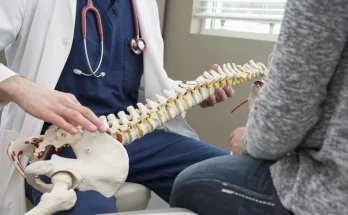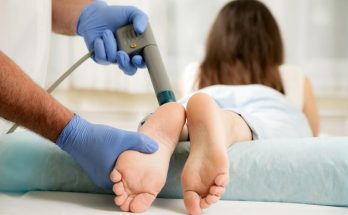Overview of Cerebral Palsy
Cerebral palsy (CP) represents a group of neurological disorders affecting movement and muscle coordination. Arising from brain damage occurring before, during, or shortly after birth, CP often impacts muscle control, posture, and balance. Causes include prenatal infections, premature birth, and oxygen deprivation during labor.
Classification of CP encompasses various types, with spastic, dyskinetic, ataxic, and mixed forms being the most prevalent. Spastic CP, characterized by increased muscle tone, accounts for roughly 70% to 80% of cases. Dyskinetic CP involves involuntary movements, while ataxic CP impacts balance and coordination. Mixed CP exhibits symptoms from multiple types.
Diverse symptoms and severity levels mean individuals with CP require tailored interventions. Approximately 30% to 50% of those with CP exhibit cognitive impairments, manifesting in difficulties with learning, memory, and problem-solving. However, others may possess average or above-average intelligence. Professionals must assess each case individually to offer appropriate support and resources.
Authorities such as the Centers for Disease Control and Prevention (CDC) and the National Institute of Neurological Disorders and Stroke (NINDS) provide critical information on CP. According to the CDC, CP is the most common motor disability in childhood, with an estimated prevalence of 1.5 to 4 per 1,000 live births worldwide.
Cognitive Skills and Cerebral Palsy
Cerebral palsy (CP) can affect not only motor skills but also cognitive abilities. It’s crucial to understand the cognitive challenges and interventions related to CP.
Common Cognitive Challenges
Individuals with CP often face cognitive challenges that vary widely. Common difficulties include:
- Attention Deficits: Many struggle to maintain focus on tasks, impacting their learning and performance.
- Memory Problems: Short-term and long-term memory can be affected, making it hard to retain new information.
- Executive Function: Challenges in planning, organizing, and problem-solving are prevalent.
- Language Development: Delays or impairments in language skills can hinder communication.
- Learning Disabilities: Reading, writing, and math skills might be below average compared to peers.
It’s important to note that cognitive impairments range from mild to severe, with some individuals exhibiting average or above-average intelligence.
Cognitive Therapies and Interventions
Several therapies and interventions can assist in managing cognitive challenges:
- Behavioral Therapy: Techniques like Cognitive Behavioral Therapy (CBT) can help improve attention and executive functioning.
- Educational Support: Specialized instruction and Individualized Education Programs (IEPs) can address specific learning needs.
- Speech Therapy: Helps with language development and communication skills.
- Occupational Therapy: Focuses on improving cognitive functions related to daily activities.
- Assistive Technology: Tools like speech-generating devices and educational software can support learning and communication.
Integration of these therapies into regular routines can significantly enhance cognitive functioning in individuals with CP.
Motor Skills and Cerebral Palsy
Cerebral palsy (CP) significantly impacts motor skills, affecting movements and coordination. The type and severity of motor impairments in CP vary widely among individuals.
Types of Motor Impairments
Motor impairments in CP manifest in different forms, each affecting the body uniquely:
- Spasticity: Characterized by stiff muscles and exaggerated reflexes, spasticity prevails in approximately 70-80% of CP cases. It can present as hemiplegia (one side), diplegia (both legs), or quadriplegia (all four limbs).
- Dyskinesia: Involves involuntary movements, particularly dystonia (twisting motions) and choreoathetosis (irregular, writhing movements). Dyskinetic CP affects muscle tone and movement fluidity.
- Ataxia: Causes coordination and balance difficulties, leading to unsteady movements and problems with tasks requiring fine motor skills, like writing or buttoning clothes.
- Mixed Type: Some individuals exhibit a combination of symptoms from spastic, dyskinetic, and ataxic CP, complicating treatment and management.
Therapeutic Approaches for Motor Skills
Effective therapies can enhance motor function in individuals with CP:
- Physical Therapy: Focuses on improving strength, flexibility, and functional mobility. Techniques include stretching, muscle strengthening, and gait training. Physical therapists tailor routines specific to each individual’s needs.
- Occupational Therapy: Helps individuals develop fine motor skills necessary for daily activities such as dressing, eating, and writing. Occupational therapists use adaptive equipment and task-specific exercises.
- Speech Therapy: Addresses oral motor skills, improving feeding and swallowing, and communication abilities. It often involves exercises to enhance muscle coordination in the face, neck, and tongue.
- Medication: Oral medications like baclofen or diazepam can reduce muscle stiffness and spasms. In severe cases, intrathecal baclofen delivered via pump or botulinum toxin injections may be used.
- Surgical Interventions: Procedures like selective dorsal rhizotomy (SDR) or orthopedic surgeries can correct muscle contractures and skeletal abnormalities, enhancing motor function and reducing pain.
Comprehensive therapy plans, combining multiple approaches, yield the best outcomes. Regular assessments by multidisciplinary teams adjust strategies to meet evolving needs, ensuring optimal independence and quality of life for individuals with CP.
Impact on Daily Life
Cerebral palsy (CP) influences many aspects of an individual’s daily life, affecting not only motor functions but also cognitive, social, and emotional well-being.
Educational Implications
Education presents significant challenges for students with CP. They often require individualized education plans (IEPs) tailored to their unique needs. Physical limitations might affect their ability to write, type, or participate in certain classroom activities. Cognitive impairments can lead to difficulties with attention, memory, and processing information. Assistive technologies, such as speech-to-text software and adaptive keyboards, can help mitigate these obstacles. Regular collaboration among educators, therapists, and families ensures that the child receives comprehensive support throughout their educational journey.
Social and Emotional Effects
CP can impact social interactions and emotional health. Motor impairments might make participation in social activities difficult, while cognitive challenges can affect communication and relationship-building. Children with CP may experience feelings of isolation or frustration, potentially leading to anxiety or depression. Support groups, both in-person and online, provide valuable emotional support and foster connections with peers facing similar challenges. Mental health professionals, including psychologists and counselors, play a crucial role in addressing emotional well-being through therapy and counseling sessions, promoting resilience and positive coping strategies.
Advances in Research and Treatment
Ongoing research and innovative treatments are transforming the lives of those with cerebral palsy (CP). These advances are offering new hope and improving both cognitive and motor outcomes.
Innovative Therapies
Innovative therapies are pushing the boundaries of CP treatment. Stem cell therapy, for instance, holds promise. Studies show that stem cells can replace damaged brain cells, potentially improving motor functions. Researchers are also exploring neuroplasticity-based therapies. These therapies harness the brain’s ability to reorganize itself, aiding in motor skill recovery.
Robotic-assisted therapy is another cutting-edge approach. Robotic devices help individuals perform repetitive movements, enhancing muscle strength and coordination. Virtual reality (VR) therapy combines VR technology with physical exercises, providing immersive environments that encourage motor skill practice and cognitive engagement.
Future Directions
The future of CP treatment looks promising, with several emerging trends. Precision medicine is at the forefront. This approach tailors treatments to the individual’s genetic makeup, offering more targeted and effective interventions.
Advancements in brain-computer interfaces (BCIs) also show potential. BCIs enable direct communication between the brain and external devices. These interfaces may help individuals with severe motor impairments control prosthetic limbs or computer systems using only their thoughts.
Researchers are additionally focusing on gene therapy. This innovative treatment aims to correct or replace faulty genes responsible for CP. Early studies indicate that gene therapy could reduce the severity of symptoms, although further research is required.
Together, these advances in research and treatment pave the way for a brighter future for individuals with CP, enhancing their quality of life and expanding their capabilities.
Suggested Reading
- Stanford Childrens Hospital
- Levin and Perconti
- Birth Injury Justice
- CDC
- JJS Law
- Lubin and Meyer
- United Cerebral Palsy
- Cerebral Palsy Guide




